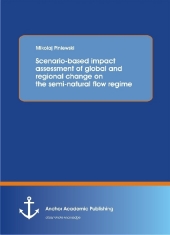 Neuerscheinungen 2014Stand: 2020-02-01 |
Schnellsuche
ISBN/Stichwort/Autor
|
Herderstraße 10
10625 Berlin
Tel.: 030 315 714 16
Fax 030 315 714 14
info@buchspektrum.de |

Mikolaj Piniewski
Scenario-based impact assessment of global and regional change on the semi-natural flow regime
Erstauflage. 2014. 212 S. 53 Abb. 220 mm
Verlag/Jahr: ANCHOR ACADEMIC PUBLISHING 2014
ISBN: 3-9548927-4-X (395489274X)
Neue ISBN: 978-3-9548927-4-7 (9783954892747)
Preis und Lieferzeit: Bitte klicken
Globally, freshwater ecosystems are considered to be under severe threat from human pressure and climate change (Vörösmarty et al., 2010). Malmqvist and Rundle (2002) suggest that running water is the most impacted upon ecosystem on Earth due to being surrounded by dense human settlements and exploited for domestic and industrial water supply, irrigation, electricity generation and waste disposal. For example, the progressive over-exploitation of surface water resources for irrigation and urban uses in the Colorado River Basin has resulted most years in no runoff reaching the river s delta (Gleick, 2003). [ ]
Hereafter, natural and anthropogenic driving forces will be referred to as global and regional driving forces, respectively. The future effects of these forces up to the 2050s will be assessed in quantitative scenarios implemented in a hydrological model. It is believed that using this nomenclature (i.e. global and regional instead of natural and anthropogenic) better reflects considered environmental stressors, since global-scale driving forces will include not only climatic change but also changes in CO2, atmospheric carbon dioxide and plant physiological parameters, whereas regional-scale driving forces will include changes in land use, agriculture development and agricultural water management. Hence, the difference is that the first group of driving forces acts globally and independently on the study area, whereas the second group includes factors that are specific to the study area. Furthermore, in order to expand on the title of this thesis, impacts in the present study will be assessed not only on the flow regime as such, but also on its ecological functions, i.e. on the environmental flow regime. This is motivated mainly by the semi-natural character of the study area, that is unique in Poland and in Europe, but it also underlines the novelty of this thesis, as going beyond the pure impacts on the flow regime in a scenario-modelling framework is rare in hydrological science, if achieved at all.


